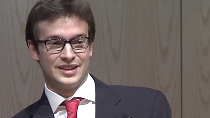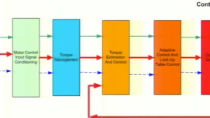Accelerating Control Systems Development from Research to Production
Dr. Romain Guicherd, Dyson Technology
Innovation is at the heart of our products at Dyson. Behind the scenes, the development journey of a product relies on multiple design iterations, each of increasing maturity. This allows us to deliver consistent improvements and to learn more about our products and systems. In the past, this development followed a document-based approach, also known as a document centric workflow.
Embracing a Model-Based Design workflow was essential to developing ever more complex and smarter products. This workflow allows our engineering and design teams to iterate faster and to take on user feedback early in the development process, whilst delivering our groundbreaking technologies.
Model-Based Design and simulations are the enablers that accelerate our development pace. With this workflow, documents are replaced by a collection of interlinked models. These models encapsulate both requirements and design as well as testing and reports for coverage and verification.
Published: 4 Nov 2024




